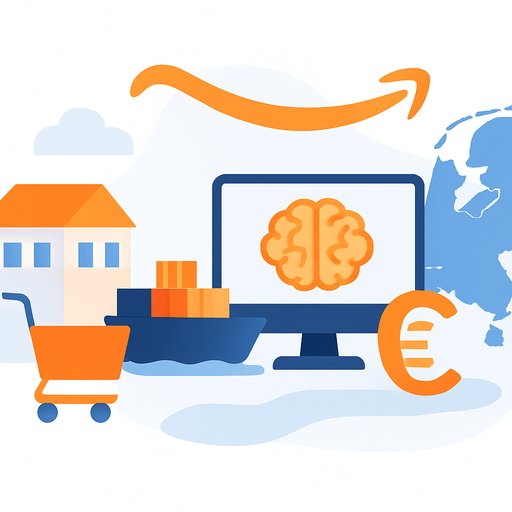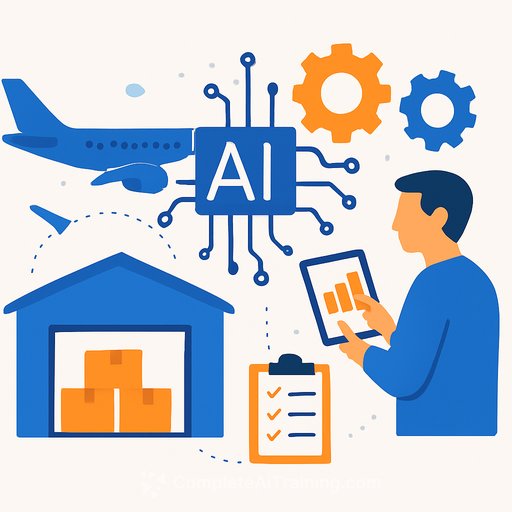Amazon invests €1.4B in the Netherlands: what operations leaders should prepare for
Amazon is set to invest €1.4 billion (about $1.63 billion) in the Netherlands over the next three years, with a clear focus on AI tools that help third-party sellers. The company currently employs roughly 1,000 people in the country and faces stiff competition from Bol.com, part of Ahold Delhaize.
This move follows a separate $1.16 billion commitment in Belgium, signaling deeper expansion across Western Europe. For operators, this isn't just big headline money-it points to new seller tooling, shifts in fulfillment capacity, and tighter service expectations.
Where the money is likely headed
Amazon has confirmed the emphasis on AI for entrepreneurs selling on its platform. Expect investments that make listing, inventory, pricing, and service more automated and less manual.
- Catalog and content: Faster listing creation, improved translations, and automated content optimization.
- Forecasting and replenishment: Better demand signals, leaner inventory, and fewer stockouts across EU nodes.
- Customer service and returns: Smarter self-service flows and quicker resolution routing.
- Advertising and pricing: More predictive bids and pricing suggestions tied to Buy Box probability and margin protection.
What this means for your supply chain
With headcount at ~1,000 in the Netherlands and a large capital plan rolling in, expect hiring across seller support, ML/engineering, and fulfillment functions. Competition with Bol.com should push both sides to improve delivery speed, selection, and convenience.
The Belgium investment points to more cross-border coordination inside the Benelux region. That often translates to new SLAs, rebalanced inventory across FCs, and updated fee structures.
- Network changes: Watch for new or expanded nodes that shift where you stage inventory.
- FBA/3PL mix: Revisit which SKUs sit FBA vs. your own DCs; rebalance for speed-to-customer and fees.
- Returns flows: Consolidate return hubs and tighten triage to cut write-offs.
- Compliance: Keep EU packaging, WEEE, battery, and EPR rules up to date as volumes move.
Action checklist for operations teams
- Data readiness: Clean product data (titles, attributes, GTINs) so AI tools can actually help.
- Inventory planning: Shorten planning cycles for EU nodes; set alerting on FC transfer times.
- Listing velocity: Standardize templates for faster ASIN launches across NL/BE.
- Ad and price automation: Pilot rules that protect contribution margin, not just top-line.
- Service metrics: Track ODR, late shipment rate, and return reasons weekly; fix root causes, not symptoms.
- Multichannel play: Balance Amazon and Bol.com to de-risk channel dependence and improve total sell-through.
Metrics to watch
- Buy Box share by ASIN and by country (NL vs. BE)
- ASIN conversion vs. delivery promise (same-day/next-day uplift)
- FBA fee changes, storage days, and peak surcharges
- Return rate and refund lag by category
- Seller support response and resolution time
Competitive context
Bol.com remains a dominant local player, with strong customer trust and a wide partner network. Amazon's spend suggests a push on convenience, better seller tooling, and more localized experiences.
For operations leaders, the winning move is channel agility: keep listings synchronized, stage inventory where demand is, and use each marketplace for what it's best at.
Helpful resources
Upskill your team for AI-driven operations
If you're formalizing AI skills inside ops-forecasting, catalog automation, or process automation-these can help:
Bottom line: budget for faster listing cycles, tighter service standards, and smarter planning across NL and BE. Get your data in order, test the new tools early, and keep a close eye on unit economics as the network shifts.
Your membership also unlocks:






